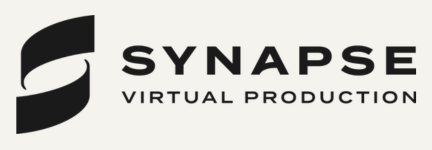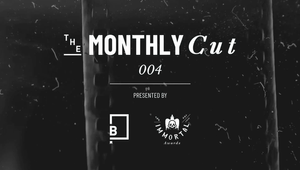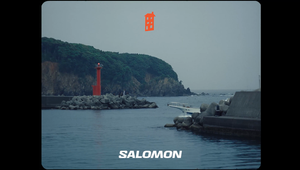
Directors Should Bring “Healthy Tension”, Outside Perspective. “Clients Can Misunderstand” That

The outsider perspective and dose of “healthy tension” good directors bring is more important to a creative idea’s success than complete alignment, agency leaders Hilary Badger and Alex Derwin say.
That’s because agency creatives “work in a system that is quite unforgiving”, so work benefits when it is shaped by a director’s cultural and aesthetic taste as early as possible -- but this requires bending and breaking traditional processes.
Leo Australia’s Melbourne executive creative director Hilary tells LBB agencies, work with directors based on their overall vision, and what they can bring to a creative brief.
Being on board with the creative concept is important, but empowering a director to challenge and stretch an idea helps them take the “right kind of risks” -- leading to the best creative work possible.
“It has to be a collaborative process, otherwise it’s no fun for anyone,” Hilary says.
“The best value a director brings to a campaign comes when they’re empowered to do what they do best. The key to that is finding the right person and having your client fully invest in the vision, because it’s the right vision for the brand.
“That creates the opportunity for the right kind of risks to be taken. I don’t think it should feel like anyone is taking control. Everyone should feel bought in and be an active participant in the process.”
Vision, for Hilary, is more than taste or aesthetic; it’s the entire creative approach to a campaign. She notes that while agencies look at work through the lens of what it needs to do for a client, directors can offer an essential storytelling perspective.
“It’s vital to stay open to other perspectives,” Hilary says.
“We love to work with directors who have a unique point of view. They bring us expertise we couldn’t have.
“The best creative relationships I’ve had with directors are where I’ve found the right person for the project and created the circumstances for them to do their best work.”
But for this collaboration to exist, agencies, brands, and directors require a level of trust that is difficult to manufacture, and therefore often elusive.
Alex, co-founder and chief creative officer of Australian independent agency Rick Barry, says a director’s job is to take the idea somewhere “really special” that taps into the public consciousness.
“Creative agencies do a great job, but there’s a time when you have to hand it over to someone else,” Alex says.
“Clients can misunderstand this part of the project. We might have a script, a strategy, and understand the budgets, but then the director comes in and adds a little bit of magic. That’s something really hard for a creative agency to do, because -- for better or worse -- you’re serving the client, and the director can be a bit more of a free thinker in some ways, and because of that, is a bit more connected to what’s possible.
“Maybe it’s a bit cheesy, but it’s a magic they offer.”
Directors’ work tends to stretch beyond advertising to music videos, short films, and even long-form and passion projects in between commercial work.
“Directors are very curious, interested people who work outside the system a little bit, and I think that's why they're special,” Alex adds, “because as much as advertising creatives have incredible brains … they do work in a system that is quite unforgiving.”
Creative agencies face a multitude of pressures during what Alex calls the “long and arduous process” of turning an idea into an ad: time pressure, budget and resourcing pressures, client pressures, and the brief itself.
“Because they aren’t working for an agency, directors are a bit more culturally connected than the rest of us. That is incredibly important to the end product. They understand writing and strategy, but they also float outside of the industry.”
That “magic” is why Alex advocates for bringing directors into the creative process as early as possible; he believes agencies should do it more.
“There are usually old systems and process[es] in place that agencies are reluctant to give up on,” he explains.
“To bring directors in earlier successfully, you need to examine the business model. The director isn't on the agency payroll, so getting involved in the process early requires a bit of trust from both sides.
“The director needs to know that something good is going to come out of it, and that they are going to make something and be paid, because otherwise it's a huge time suck.
“The client needs to trust the agency to make good calls around the director. With that trust, you can actually make the overall process much more efficient, and avoid awkward handovers between the client, agency, and production.”
Hilary also likes to involve a director as soon as possible in the creative process, but notes agency workflows can get in the way of this becoming a reality. The usual three-way pitch to choose a production company precludes it, or at least poses a significant barrier.
“When earlier collaboration is possible, it’s fantastic because the more creative minds working on something, the better the outcome,” Hilary says.
“But it’s usually difficult for understandable process reasons. For example, the need to triple bid a production -- a lot of clients need that to happen, so they can prove value back to their business.”
Alex adds that clients want options, and will usually ask to see three treatments of a script.
“Seeing the same idea from various perspectives helps the agency and client rest assured they have the right concept. They also want to know they’ve got value for money. If you're pitching production companies against each other, they're all going to make sure they're trying to deliver value for money. You want to make sure clients are getting what they paid for.”
Alex, formerly the CCO at BMF, doesn’t see traditional agency workflows as a negative, necessarily, noting it is ideal for some projects, such as when an idea isn’t yet crystallised.
“When the client and the agency aren’t pulling in the same direction yet, you don’t want to get the director involved at that time … don’t expect them to come into the middle of that and expect them to be the arbiter of the way forward – you need that initial alignment first.
“If there's misalignment, there's no point, because we all waste our time and energy.”
He sees the traditional model as “a bit slow, a little bit bureaucratic”, and tending not to lead to the best work. That’s why Rick Barry, the agency he co-founded with ex-The Monkeys CSO Hugh Munro last year, tries to bend and break the model where needed to provide the best possible value to clients.
The indie’s recent work for industrial hose and hydraulics leader Pirtek exemplifies this flexibility, Alex says. The updated brand platform, ‘Drama Resistant Since 1980’, was shot by FINCH director Kyra Bartley, who was brought into the process well in advance of a normal production timeline.
“Knowing the brand, the tone of voice, and a little about the brief, we thought it would be best to talk to a director while the ideas were still forming,” Alex explains.
Rick Barry ran its initial concepts by Kyra, and found they were aligned on one particular idea. After workshopping how to make the “best possible film”, Kyra wrote a “mini treatment” for the production.
“This is all before a traditional process would have spoken to a director or production company,” Alex notes. “They wouldn't have been involved at this point because of money and client uncertainty.
“We presented that mini-treatment alongside the ideas and scripts to the client, and they bought it. They bought Kyra as the director. So in that process, we cut out two to three weeks of director search, and achieved alignment with the production company and the director.
“We then developed the project with FINCH, so there was less room for miscommunication or misalignment. It became one of the best processes I've ever worked on.”
Reflecting on the experience, Kyra tells LBB the best creative collaborations come with “a bit of friction”, and credits “healthy tension” in making great work.
“A good working relationship feels less like a hierarchy and more like a band,” she says.
“You don’t want everyone playing the same note; you want people bringing their own instruments, instincts and ideas, and listening closely enough to know when to lead, and when to harmonise.
“If everyone’s completely aligned from the beginning, who’s pushing the work? Who’s asking: What if this was stranger? Or funnier? Or quieter?
“The director’s job is to be a meaningful outsider; someone who comes in with a fresh perspective, but takes the time to understand what the agency loves about the idea, what they’re nervous about, and what they secretly hope it could become. From there, you can push things in unexpected directions without breaking the trust.”
Directors, she notes, do not sit above culture and decide what’s interesting -- they are inside it, “listening hard”.
“We notice the shifts in tone, the things people can’t quite articulate yet, and we give them shape.
“The more interesting role we play is as taste translators -- absorbing all the contradictions and noise of the moment, and turning them into something that feels emotionally precise.”
--
You may also like: "We Contribute More" and Make "Better Work": Why Agencies Should Involve Directors Earlier















